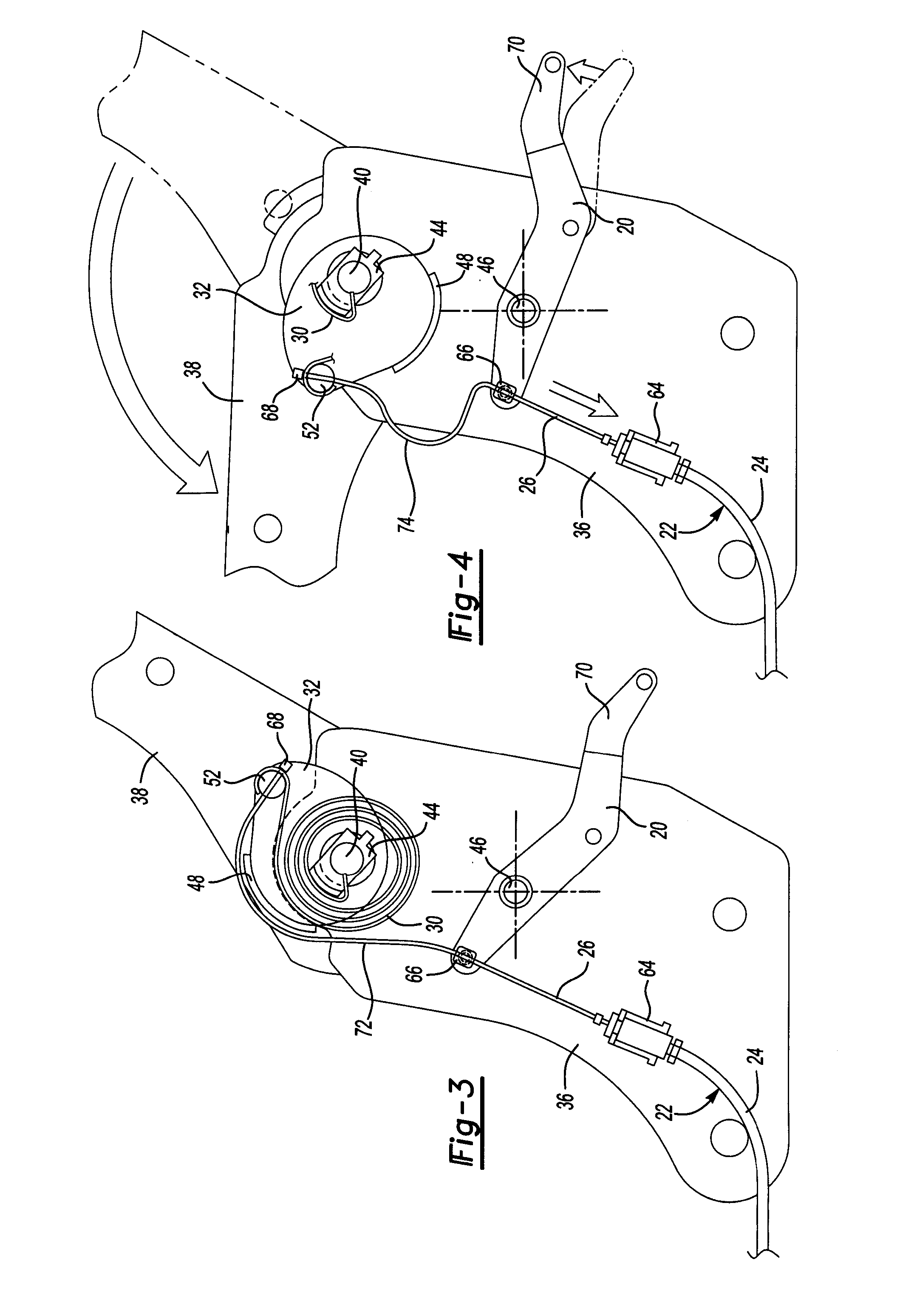Latch actuator system
a technology of latch actuator and actuator, which is applied in the direction of movable seats, vehicle components, vehicle arrangements, etc., can solve the problems of complicated resetting of dual-mode actuators, uneconomical cost of motors and gear reducers, and interference of one mode of actuation with the other mod
- Summary
- Abstract
- Description
- Claims
- Application Information
AI Technical Summary
Benefits of technology
Problems solved by technology
Method used
Image
Examples
Embodiment Construction
)
[0029] Referring to FIG. 1, a vehicle seat 10 is illustrated that has a seat back 12 and a seat base 14. An actuator 18, or trigger, is illustrated as being attached to the seat base 14. However, it should be understood that the actuator 18 could be secured to another location on the vehicle or seat support structure. A latch lever 20 is connected to the actuator 18 by a Bowden cable 22, or link. The Bowden cable 22 includes a sleeve 24 that encloses a wire 26 so that the wire 26 is axially moveable relative to the sleeve. The Bowden cable 22 is also connected to a power spring 30. The cable 22, or link, passes over a cable guide cam 32 that is rotatable with the power spring 30.
[0030] Referring to FIG. 2, one type of hinge mechanism is shown in greater detail in an exploded perspective view that shows one way of connecting the seat back to the seat base 14. It should be understood that other types of hinge mechanisms may be adapted to include the latch actuator system of the pres...
PUM
 Login to View More
Login to View More Abstract
Description
Claims
Application Information
 Login to View More
Login to View More - R&D
- Intellectual Property
- Life Sciences
- Materials
- Tech Scout
- Unparalleled Data Quality
- Higher Quality Content
- 60% Fewer Hallucinations
Browse by: Latest US Patents, China's latest patents, Technical Efficacy Thesaurus, Application Domain, Technology Topic, Popular Technical Reports.
© 2025 PatSnap. All rights reserved.Legal|Privacy policy|Modern Slavery Act Transparency Statement|Sitemap|About US| Contact US: help@patsnap.com



